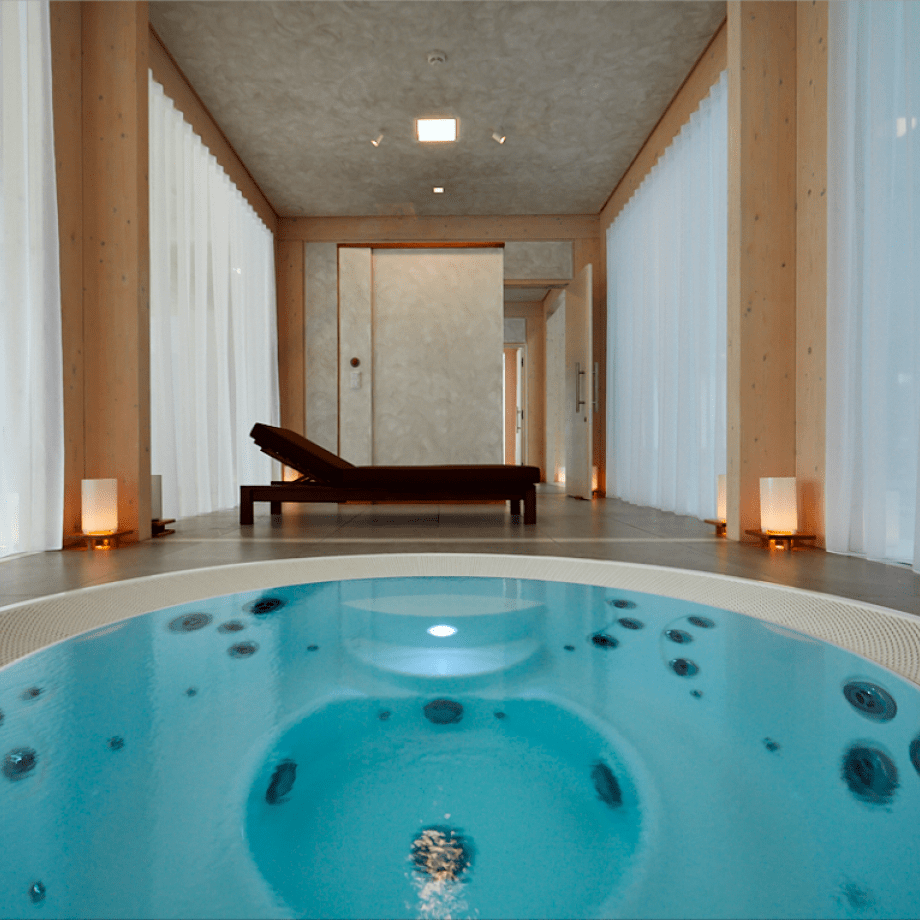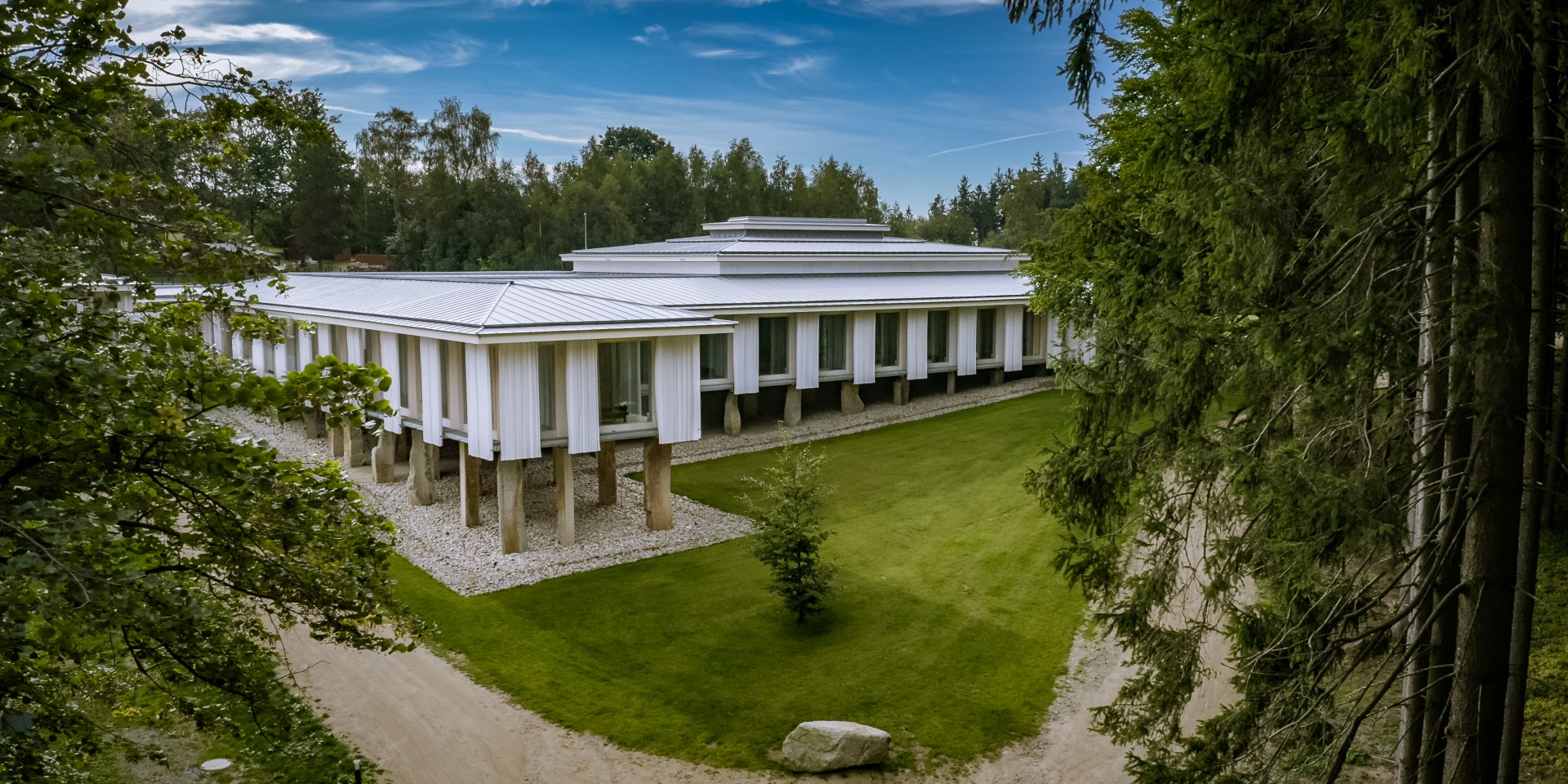WHY DID WE BUILD OUR NEW PAVILON?
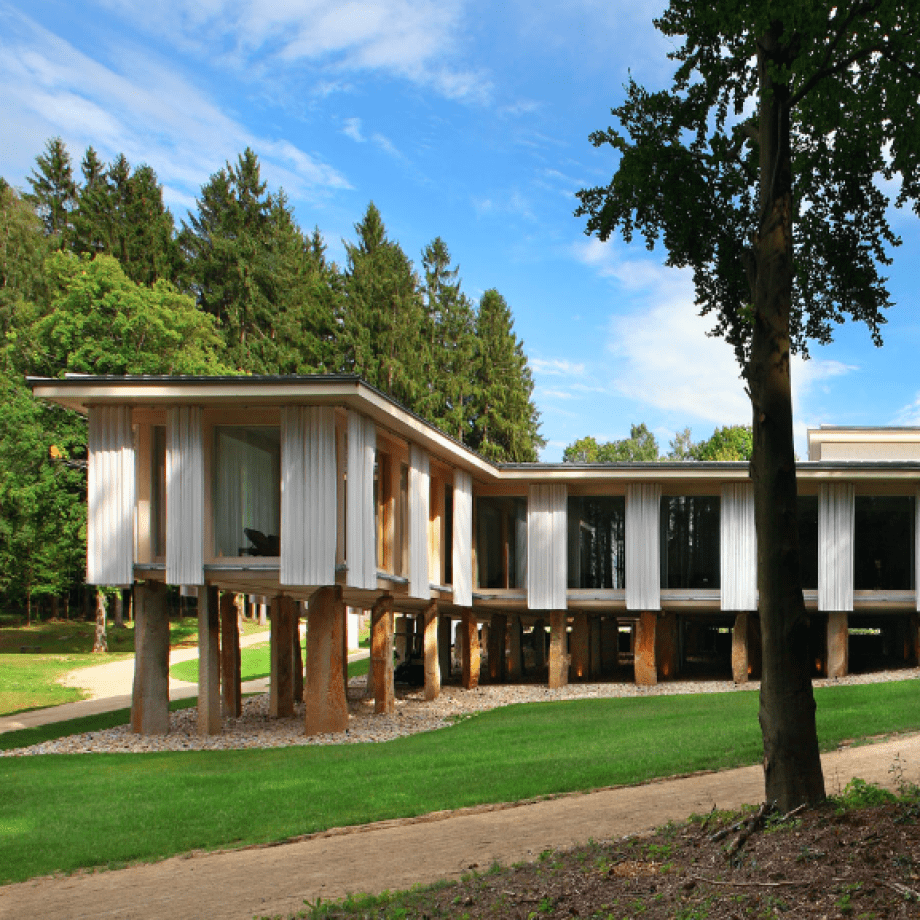
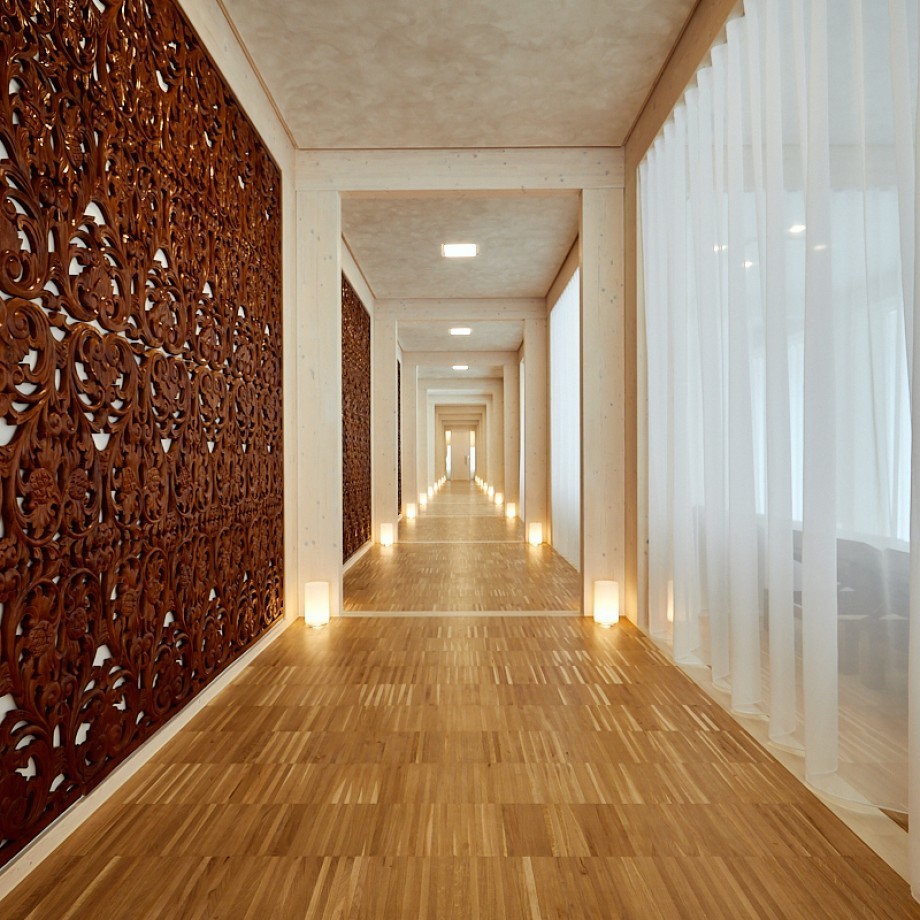
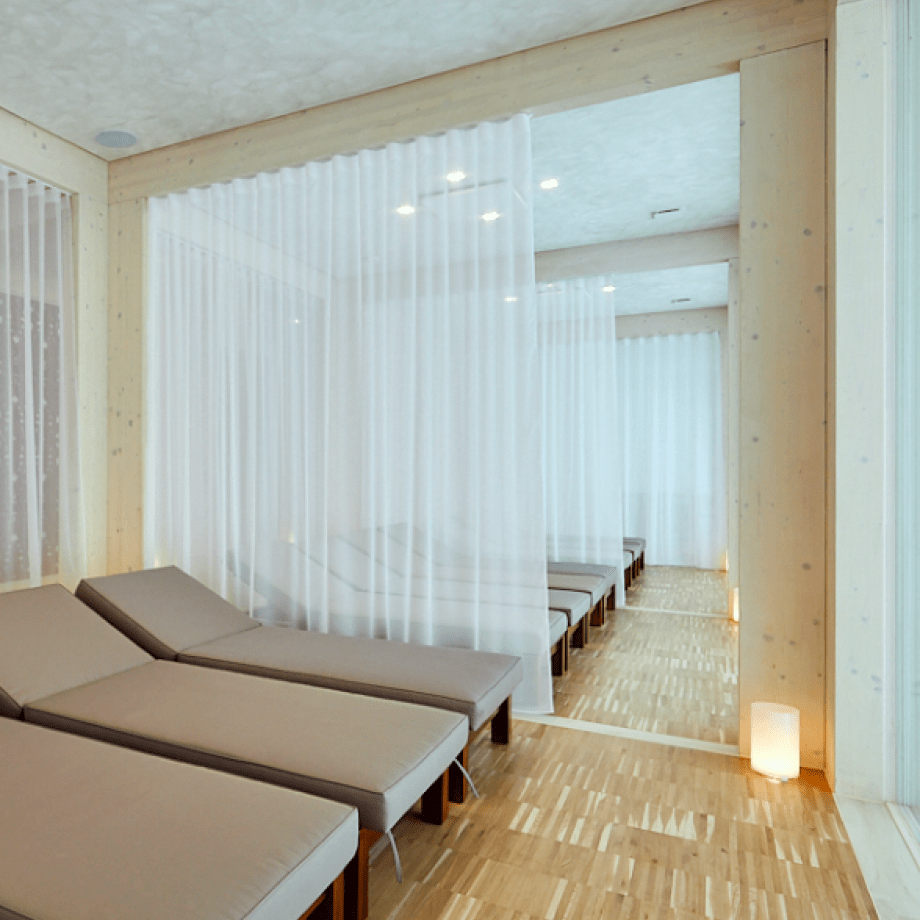
The wooden structure of the building floats on hundreds of huge granite pillars, extracted from a nearby quarry. The glass façade the pavilion strengthens the feeling of constant contact with the surrounding nature. A meditation garden with a waterfall, roaring stream and statues of Hindu Gods will take you nine thousand kilometers east and five thousand years into the past, to the cradle of Ayurveda in Kerala, India.
The first part of the pavilion is devoted to authentic Ayurveda. There are the following therapeutic rooms: Agni, Jala, Vayu, Satya and Ananda, all equipped with original Indian Ayurvedic tables and steam cabins. Close to the rooms, there is the Ayurvedic Doctor's room, an atrium with discrete terraces and an expansive relaxation area overlooking the nearby forest.
The second part of the pavilon, dedicated to the Spa, features heated swimming pool with several hydro massage seats, two modern whirlpools, a sauna with panoramic view of the surrounding nature, a steam room and a gentle reflexology "walking on stones and pebbles". The spa leads to a wooden and a granite terrace dominating the Southeastern wing of the pavilon.
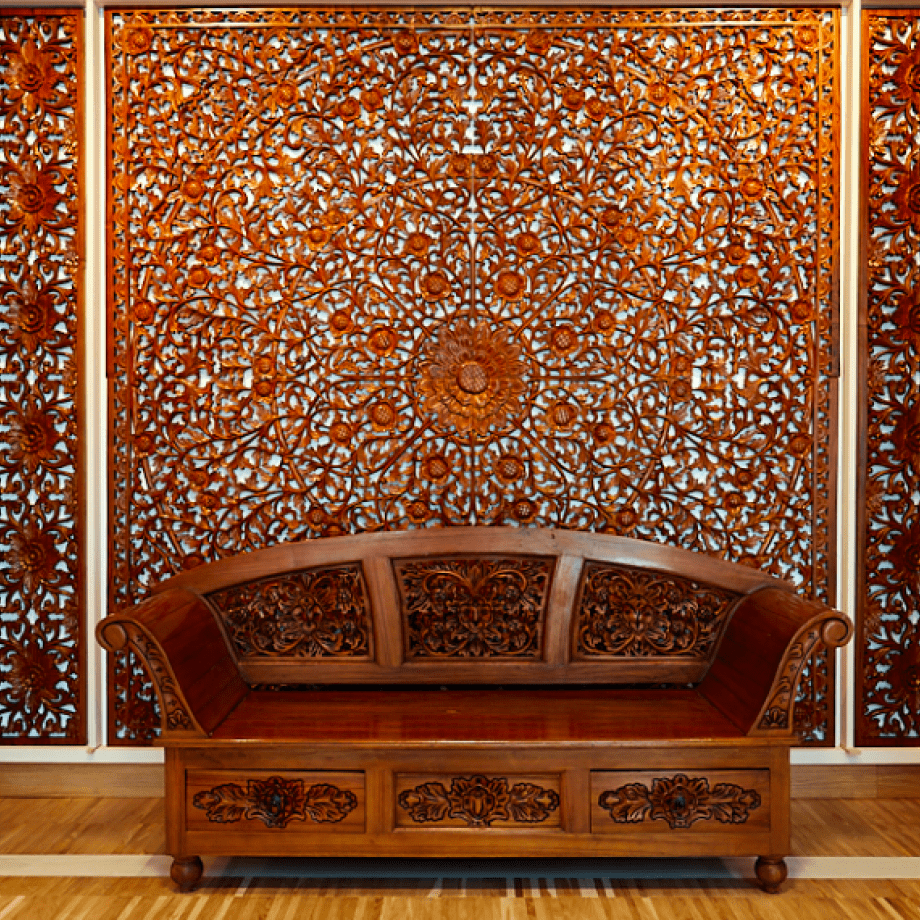
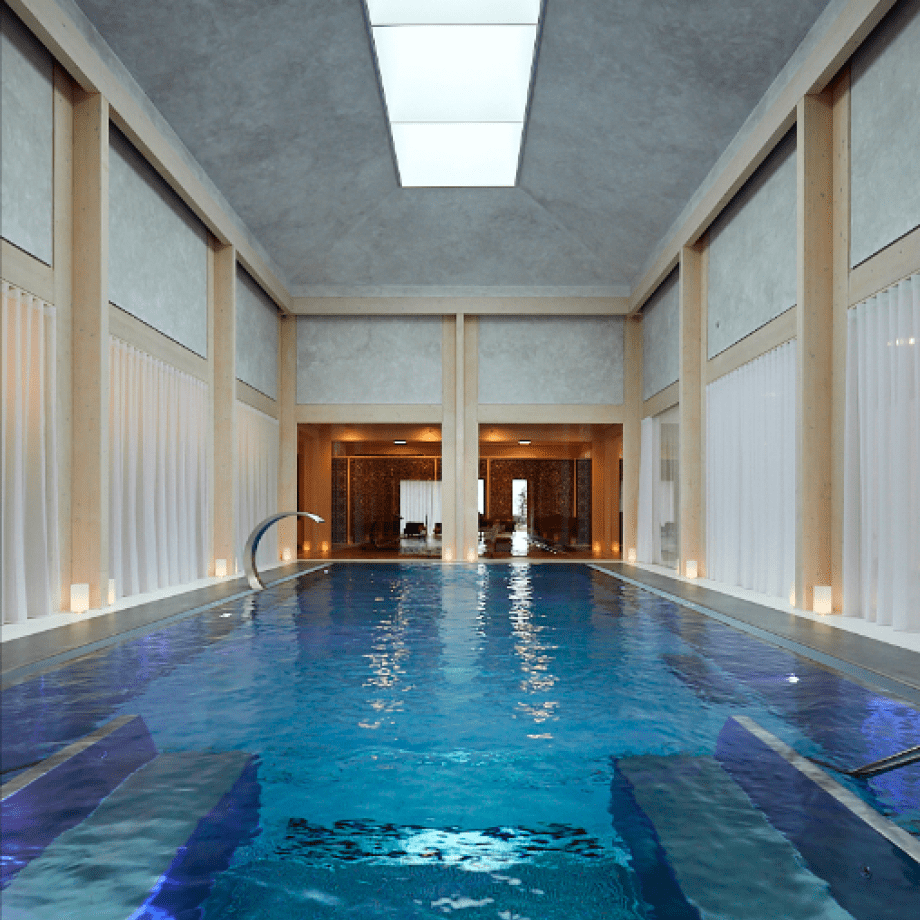
Stone personifies a memory of the Earth when being formed and coming into existence.
According to the Vedic Doctrine Vastu, the empty space in the middle of a house represents the symbolic Brahmastan - the center of the World. The energy of the house, as well as the energy of the World, flows due to this doctrine out of this mysterious, empty center. I am glad I used this principle, having a lot in common with the Western architectural tradition - the atrium structure of Greek and Roman houses or the paradise garden of medieval monastic complexes.
The central skeleton of the pavilion is formed by vertical cross columns and horizontal lintels.
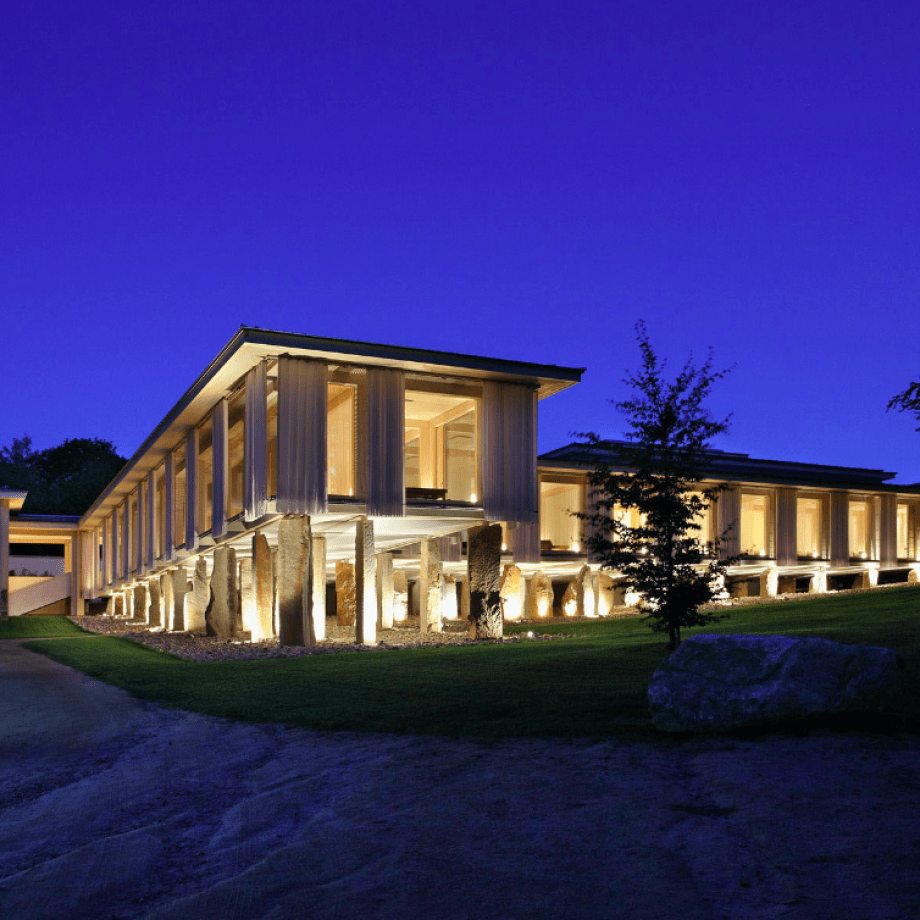
The heart of the building is devoted to water. The outside, the peripheral wall of the pavilon is designed, practically over its entire length, as an open gallery that provides visual contact with the surrounding nature.
The three sides of the pavilon open up to three different sceneries - view of open nature, nearby forest and a closed meditation garden. The fuzzy line of the solid structure, the line between the inner and the outer World, is underlined by a textile drapery, surrounding the pavilion from three sides. Besides shading, the drapery is also used as a curtain lining its surroundings, and if drawn, it affects the visual ambience of the interior of the pavilon. The basic building materials - stone and wood - complement the delicate textile material, defining the interior of the building in the fabric rendition - using the Gottfried Semper´s theory – and partly pervade the pavilion as an element dividing the space into single rooms, particularly the ones designated as relaxing rooms.
